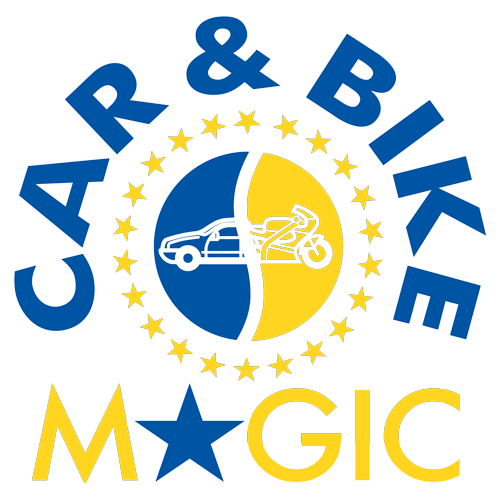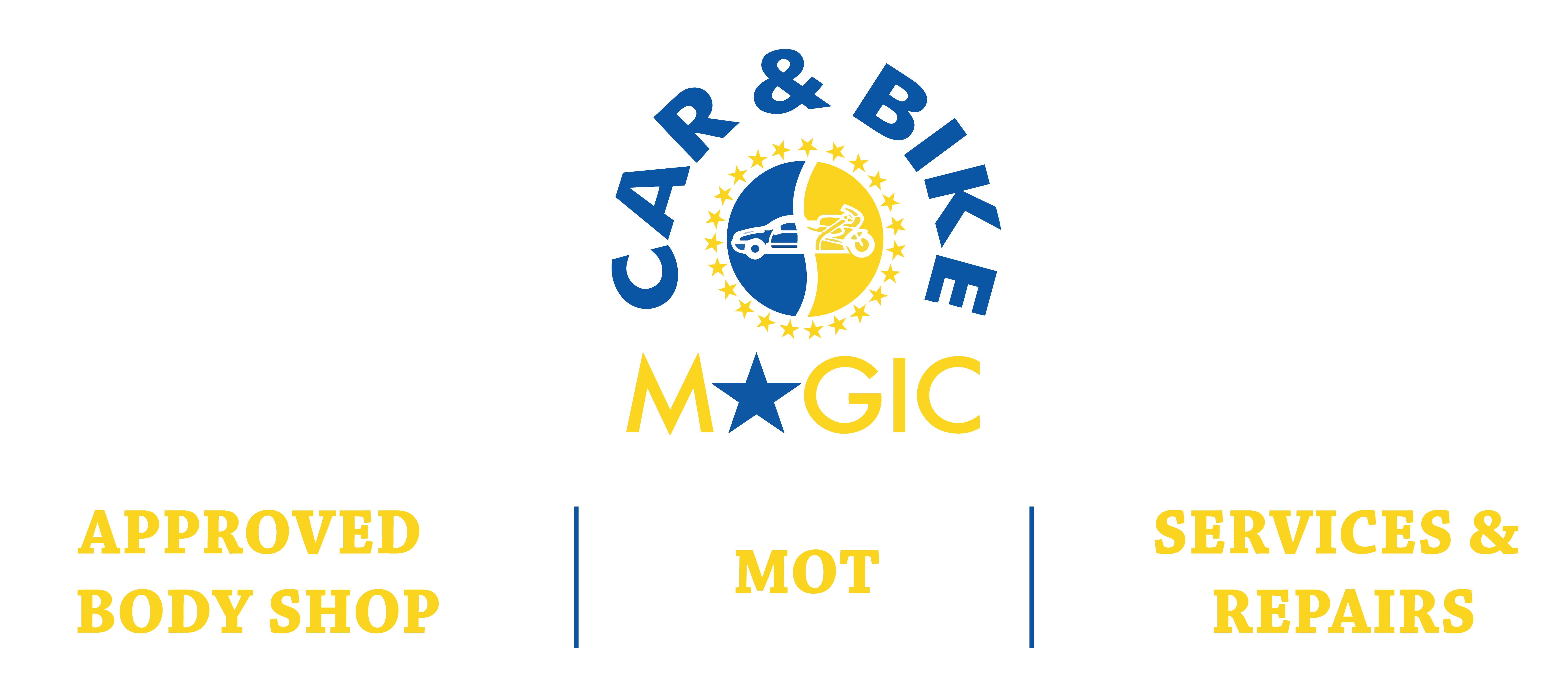Vehicle body repairs encompass a range of services aimed at restoring the external structure and aesthetics of a vehicle. These repairs are often necessary after accidents, collisions, or general wear and tear. In this comprehensive blog, Car and Bike Magic helps us to explore common types of vehicle body repairs include dent removal, scratch and paint touch-ups, panel replacement, frame straightening, bumper repairs, and windshield or window replacements. Each repair type requires specialized knowledge and equipment, with professionals often using techniques such as paintless dent repair for minor dents and computerized measuring systems for accurate frame alignment. Effective body repairs not only enhance the vehicle’s appearance but also ensure structural integrity and safety on the road.
Dent Repair
Dents are a common occurrence in the life of a vehicle. Whether it’s from a small parking lot mishap or a larger collision, dents can detract from the aesthetic appeal and value of your car. Fortunately, dent repair techniques have advanced significantly, offering solutions for various types of dents.
For minor dents that haven’t affected the paint, paintless dent repair (PDR) is often the preferred method. This technique involves manipulating the metal from behind the panel, massaging it back into its original shape without the need for repainting. It’s a cost-effective and efficient way to fix small dings and dents.
For larger or more complex dents that have damaged the paint, traditional dent repair methods come into play. This involves assessing the extent of the damage, possibly pulling out the dent, filling it with body filler if necessary, and then repainting the affected area to match the rest of the vehicle’s color and finish. Skilled technicians use specialized tools and techniques to ensure a seamless repair.
Paint Repair
Scratches, chips, and peeling paint are common issues that can detract from the appearance of your vehicle. Paint repair involves restoring the paint finish to its original condition, enhancing the overall look of the car.
For minor scratches and chips, touch-up painting is often sufficient. This involves carefully applying paint to the affected area, blending it with the surrounding paint to create a seamless finish. Advanced touch-up kits come with color-matched paint and clear coat for professional-looking results.
Deeper scratches or areas with peeling paint may require more extensive paint repair. This can involve sanding down the damaged area, applying primer to promote adhesion, painting the area with matching paint, and finally applying a clear coat for protection and shine. Skilled painters ensure that the repaired area blends seamlessly with the rest of the vehicle.
Bumper Repair
Bumpers are designed to absorb impact and protect the vehicle’s front and rear ends. However, they are also prone to damage in accidents or collisions. Bumper repair involves addressing various issues, from minor scratches to more significant damage.
For minor scratches and scuffs on plastic bumpers, technicians can often sand down the damaged area, apply filler if needed, and repaint the bumper to restore its appearance. For larger damage such as cracks or dents, parts of the bumper may need to be replaced, ensuring structural integrity and aesthetics.
Bumper realignment is another aspect of bumper repair. If the bumper is misaligned or protruding after an impact, technicians can adjust and realign it to ensure proper fit and functionality.

Collision Repair
Collisions can result in extensive damage to a vehicle’s body, requiring comprehensive collision repair. This type of repair encompasses various elements, from assessing structural damage to replacing damaged components.
After a collision, the first step is a thorough inspection to assess the extent of the damage. This may involve using computerized diagnostic tools to identify structural issues that aren’t immediately visible.
Structural repairs may include frame straightening to restore the vehicle’s structural integrity. This process requires specialized equipment and expertise to ensure precise alignment according to manufacturer specifications.
Panel replacement is common in collision repair, especially for heavily damaged areas. Technicians carefully remove damaged panels and install new ones, ensuring proper fit and finish. The repaired panels are then painted to match the rest of the vehicle.
Rust Repair
Rust is a common enemy of vehicle bodywork, particularly in areas exposed to moisture and road salt. Rust can weaken metal surfaces, compromise structural integrity, and detract from the vehicle’s appearance.
Rust repair involves several steps to remove existing rust, prevent future corrosion, and restore the affected areas. The first step is to sand or grind away the rusted metal until only clean, solid metal remains.
After removing the rust, technicians may apply rust inhibitors or primers to prevent further corrosion. If the damage is extensive, patching or replacing the affected metal may be necessary to ensure a durable repair.
Once the repair is complete, the affected area is painted to match the vehicle’s color and protect against future rust formation. Regular maintenance, such as washing and waxing, can help prolong the life of the repair and prevent rust from reoccurring.
Scratch Repair
Scratches are a common annoyance for vehicle owners, whether from minor incidents or everyday wear and tear. While some scratches may be superficial, deeper scratches can expose bare metal and require prompt repair to prevent further damage.
For minor scratches, polishing and buffing techniques can often improve the appearance significantly. Polishing compounds are used to gently remove surface imperfections and restore the shine to the paint.
Deeper scratches may require more intensive repair, such as sanding down the affected area, applying filler if needed, and painting the area to match the rest of the vehicle. Skilled technicians carefully blend the paint to ensure a seamless finish that’s indistinguishable from the surrounding paintwork.
Regular maintenance, such as waxing and protective coatings, can help prevent scratches and maintain the appearance of your vehicle’s paintwork over time.
Windshield Repair
A damaged windshield not only affects visibility but also compromises the structural integrity of your vehicle. Windshield repair involves addressing issues such as cracks, chips, and breaks to ensure safety and functionality.
For minor chips and cracks, windshield repair techniques such as resin injection can be used. This involves injecting a specialized resin into the damaged area, which bonds with the glass and prevents the damage from spreading. The repaired area is then polished to restore clarity and strength.
In cases where the damage is more extensive, windshield replacement may be necessary. Skilled technicians carefully remove the old windshield, clean the frame, and install a new windshield to factory specifications. Proper installation is crucial for ensuring a secure fit and optimal performance.
Panel Replacement
Vehicle panels, such as doors, fenders, and hoods, can sustain damage in accidents or collisions. Panel replacement is a common repair method for restoring the structural integrity and aesthetics of a vehicle.
When a panel is damaged beyond repair or if repair would compromise safety, replacement is the recommended course of action. Skilled technicians remove the damaged panel, assess the surrounding areas for any hidden damage, and install a new panel that matches the vehicle’s specifications.
Proper panel replacement requires attention to detail and alignment to ensure seamless integration with the rest of the vehicle. Paint matching is also essential to maintain a consistent look across all panels.
Frame Repair
The frame of a vehicle provides structural support and stability. In accidents or collisions, the frame can become bent or damaged, requiring specialized frame repair techniques to restore its integrity.
Frame repair starts with a comprehensive assessment of the damage using precision measuring tools. Technicians identify areas of misalignment or deformation and devise a plan to realign the frame to factory specifications.
Frame straightening may involve using hydraulic equipment to carefully manipulate the metal back into shape. This process requires skill and expertise to ensure that the frame is properly aligned and structurally sound.
After frame repair, a thorough inspection is conducted to verify the integrity of the repairs and ensure the vehicle’s safety and performance.
Paintless Dent Repair
Paintless dent repair (PDR) is a specialized technique used to repair minor dents without the need for repainting. This method is ideal for small dings and dents that haven’t damaged the paint surface.
During paintless dent repair, skilled technicians use specialized tools to access the backside of the dent and gently massage the metal back into its original shape. This process preserves the vehicle’s factory finish and eliminates the need for filler or paint.
Paintless dent repair is often faster and more cost-effective than traditional dent repair methods. It’s a popular choice for restoring the appearance of a vehicle after minor accidents or hail damage.
Dent Removal Techniques

Dents can occur in various parts of a vehicle, from doors and fenders to bumpers and hoods. Dent removal techniques vary depending on the location and severity of the dent.
For shallow dents with no paint damage, paintless dent repair is often used. This method involves accessing the backside of the dent and carefully manipulating the metal to restore its original shape.
Deeper dents may require traditional dent repair techniques, such as filling and painting. Technicians assess the damage, fill the dent with body filler if needed, sand it smooth, and repaint the area to match the rest of the vehicle.
Advanced dent removal techniques may also include using specialized tools and equipment, such as dent pullers and heat guns, to reshape and repair dents effectively.
Rust Prevention
Preventing rust is essential for maintaining the appearance and structural integrity of your vehicle’s bodywork. Rust prevention techniques help protect metal surfaces from corrosion and prolong the life of your vehicle.
Regular washing and waxing are fundamental rust prevention measures. Washing removes dirt, salt, and debris that can contribute to rust formation, while waxing creates a protective barrier against moisture and environmental elements.
Applying rust inhibitors or coatings to vulnerable areas, such as the underside of the vehicle and wheel wells, can further protect against rust. These products create a barrier that inhibits the formation of rust-causing agents.
Inspecting your vehicle regularly for signs of rust, such as bubbling paint or rust spots, allows you to address potential issues early and prevent corrosion from spreading. Prompt repair of scratches or chips that expose bare metal, is also crucial for rust prevention.
Conclusion:
In conclusion, understanding the common types of vehicle body repairs is essential for car owners and enthusiasts alike. Whether dealing with minor scratches or major collision damage, knowing the options available can help in making informed decisions and ensuring the best possible outcomes for your vehicle. Professional body repair services offer expertise, precision, and safety measures to restore your car’s appearance and structural integrity effectively. By addressing issues promptly and using the right techniques, you can keep your vehicle looking great and maintain its value over time.



